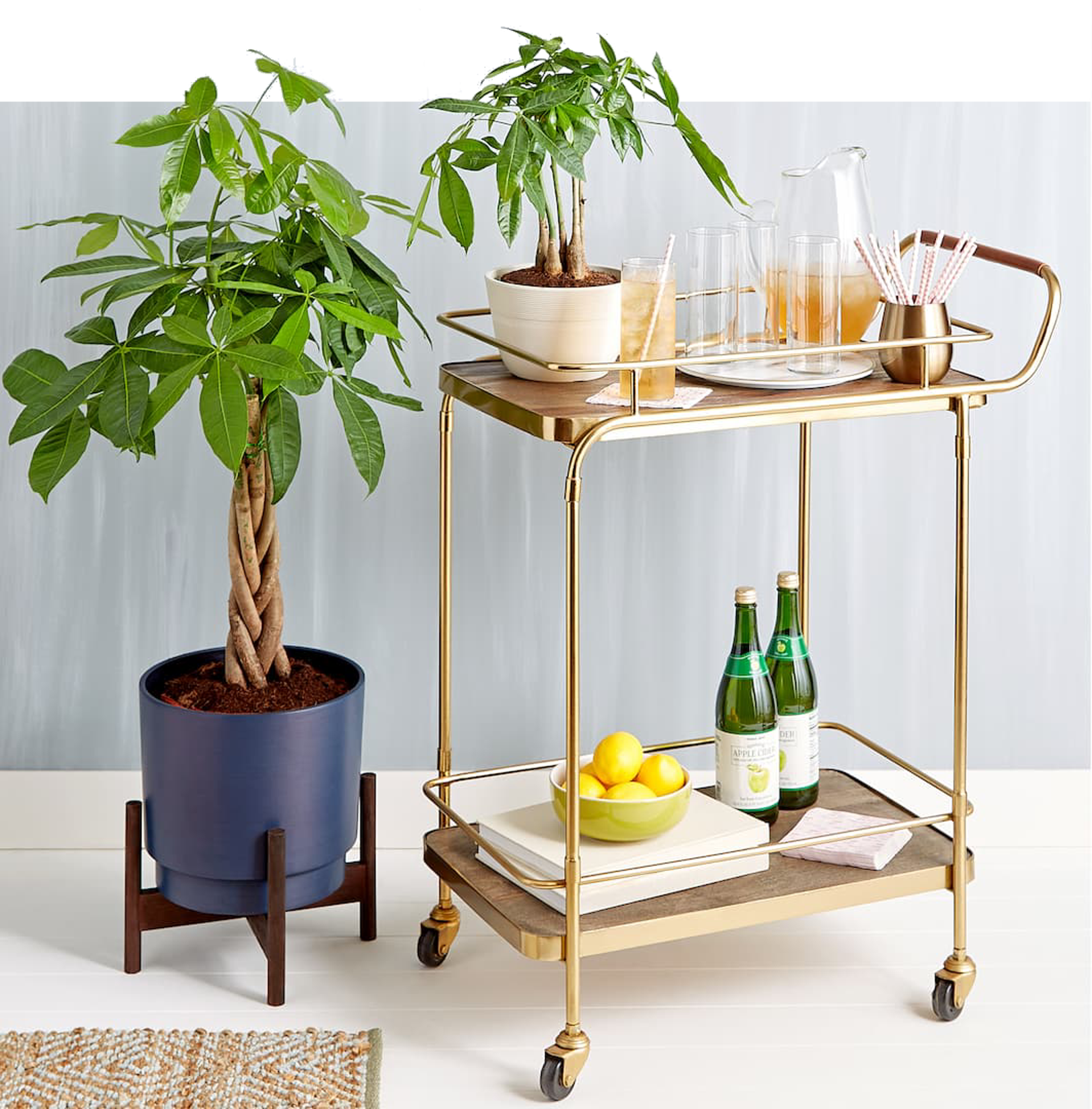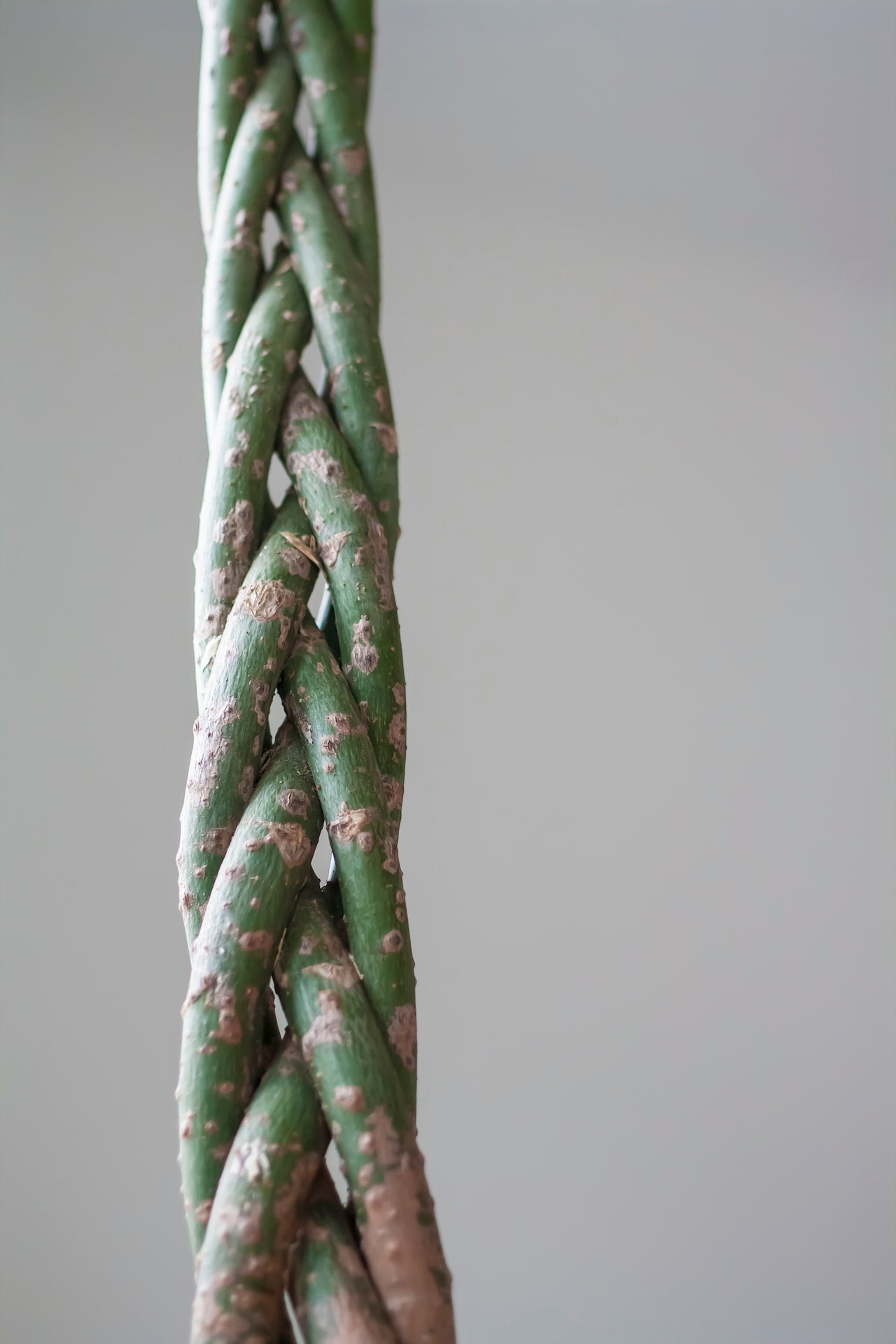Everything You Need to Know About the Money Tree
Aug 04, 2023
The Money Tree is one of the most popular houseplants in the world today. In this article, we’ll try to explain why. Whether you are an existing money tree owner, or someone considering a purchase, we’ll try to answer all your questions about this beloved plant.
What is the origin of the Money Tree?
The origin of the term "money tree" as a popular name for the Pachira aquatica plant is not entirely clear. It is believed to have originated from a Taiwanese folklore story that tells of a poor man who prayed for wealth and found this unusual plant in his garden. As the plant grew, he believed it brought him good luck and prosperity, leading to the association of the plant with wealth and financial fortune.

The Pachira aquatica itself is native to Central and South America, particularly in countries such as Mexico, Brazil, and Guyana. It is also known by various other names, such as "Malabar chestnut," "Saba nut," or "Guiana chestnut" in different parts of the world. In its natural habitat, the Pachira aquatica can grow quite tall, reaching heights of up to 60 feet (18 meters). However, when grown as a houseplant, it is generally much smaller, typically ranging from 3 to 6 feet (1 to 2 meters) in height.
Over time, the plant gained popularity as an indoor ornamental plant, particularly in Asian cultures where it is often associated with luck and fortune. People began calling it the "money tree" due to its association with positive financial outcomes and success in the folklore story. Today, the money tree is a common houseplant in many parts of the world, often given as a gift and believed to bring good luck and prosperity to its owners.
The braided money tree (Pachira aquatica) is a specific form of the money tree plant that has its origins in Taiwanese culture. The braided version is created through a process of carefully intertwining the stems of multiple young Pachira aquatica plants. The result is a visually striking and aesthetically pleasing braided trunk. The houseplant version of the money tree is usually the braided version of the plant.
Why is the money tree so popular?

The money tree (Pachira aquatica) has gained popularity for several reasons, making it a sought-after houseplant in many cultures around the world. Here are some of the key factors contributing to its popularity:
- Symbolism: The money tree is associated with good luck, prosperity, and wealth in various cultures, particularly in Asian traditions. Many people believe that having a money tree in their home or office will attract positive energy and financial fortune.
- Easy Care: Money trees are relatively low-maintenance houseplants, making them suitable for both experienced and novice plant owners. They can adapt to a range of indoor environments and are forgiving of occasional lapses in care.
- Aesthetic Appeal: With its lush, glossy green leaves and sometimes braided trunks, the money tree is visually appealing and can serve as an attractive decorative element in any space.
- Feng Shui: In Feng Shui, an ancient Chinese art of harmonizing with the environment, the money tree is believed to bring good luck and prosperity when placed in certain areas of the home or office.
- Air Purification: Like many indoor plants, money trees can help improve indoor air quality by absorbing pollutants and releasing oxygen, creating a healthier and more pleasant living or working environment.
- Versatility: Money trees can be grown as small tabletop plants or larger floor plants, allowing people with limited space to enjoy them as well.
- Cultural Exchange: As the world becomes more interconnected, the exchange of plants and cultural practices has become widespread. The popularity of the money tree has been further fueled by its export and import to various countries, where it has found new admirers and enthusiasts.
As you can see, the money tree has many positive attributes all combining to make it one of the most sought-after houseplants in the world.
Why does the money tree make a great gift?

The money tree is a great houseplant to purchase for oneself, but it also makes a great gift. The attributes that make it so popular for novice plant owners, also make it great for gifting. Here are some of the reasons why. First, it is aesthetically pleasing with its lush, green foliage and unique braided trunk. This makes it an attractive addition to any home or office, adding a touch of natural beauty to the space.
Second, the money tree is often associated with good luck and prosperity. Giving someone a money tree as a gift can symbolize your wishes for their financial success and abundance. It can serve as a thoughtful gesture to support someone's endeavors or to bring positive energy into their lives.
Additionally, the money tree is relatively low-maintenance and easy to care for. It can thrive in a variety of indoor environments, making it suitable for individuals with varying levels of gardening experience. This makes it a practical gift that can be enjoyed by both plant enthusiasts and those who may not have a green thumb.
Lastly, the money tree has cultural significance in several traditions, such as Chinese and Japanese cultures, where it is believed to bring good fortune and prosperity. This adds an element of cultural symbolism to the gift, making it more meaningful and special.
Overall, the money tree's visual appeal, symbolic significance, ease of care, and cultural associations make it a wonderful and meaningful gift choice for various occasions.
How do you care for a money tree?
Caring for a money tree (Pachira aquatica) involves a few key considerations. Here are some general guidelines to help you take care of a money tree:

- Lighting: Money trees prefer bright, indirect light. Place them near a window where they can receive filtered sunlight. Avoid exposing them to direct, intense sunlight as it can scorch the leaves.
- Watering: Money trees like consistent but moderate watering. Allow the top inch of soil to dry out between waterings, then water thoroughly until water drains out of the bottom of the pot. Avoid overwatering or letting the plant sit in standing water, as it can lead to root rot.
- Humidity and Temperature: Money trees thrive in moderate to high humidity levels. Mist the leaves occasionally or place the pot on a tray filled with pebbles and water to increase humidity. They prefer temperatures between 65-75°F (18-24°C) but can tolerate slightly cooler or warmer conditions.
- Soil and Potting: Use a well-draining soil mix specifically formulated for houseplants. A mixture of peat moss, perlite, and sand works well. Repot the money tree every one to two years, or when the roots outgrow the current pot.
- Fertilization: Feed the money tree with a balanced, water-soluble fertilizer once a month during the growing season (spring and summer). Follow the instructions on the fertilizer packaging for proper dilution and application.
- Pruning: Prune your money tree to maintain its desired shape and size. Trim any damaged or yellowing leaves and remove excessive growth to encourage a bushier appearance. Use clean, sharp pruning shears for this purpose.
- Pest Control: Money trees are generally resistant to pests but can occasionally be affected by common houseplant pests like spider mites, mealybugs, or scale insects. Regularly inspect the plant for any signs of pests and treat them promptly with appropriate organic or chemical pest control methods.
Remember, individual plant care can vary based on environmental factors, so it's always beneficial to observe your specific money tree and adjust care accordingly.
Can a braided money tree live outside?
The braided money tree (Pachira aquatica) is generally considered an indoor plant, particularly in regions with colder climates or extreme weather conditions. It is native to tropical and subtropical regions of Central and South America, where it thrives in warm and humid environments.

If you live in a region with a climate similar to its native habitat, where temperatures do not drop below 50°F (10°C) and you have a consistently warm and humid environment, you may be able to keep a braided money tree outdoors. However, even in such climates, it's essential to protect the plant from direct sunlight, as too much sun exposure can lead to leaf burn.
In regions with colder or harsher climates, it is best to keep the braided money tree indoors year-round or only move it outdoors during the warmer months of spring and summer. If you decide to move it outdoors temporarily, gradually acclimate the plant to the outdoor conditions to avoid shock.
Remember that abrupt changes in light, temperature, or humidity can stress the plant and lead to health issues. Therefore, it's crucial to monitor the plant closely and bring it indoors if the weather becomes unfavorable or if temperatures drop below its tolerance level.
For most people, the braided money tree is better suited as an indoor houseplant, where you can provide a stable and controlled environment to ensure its health and well-being.
Start your money tree journey
We hope this article helped you understand all the attributes of the money tree. It truly is a remarkable plant, for many reasons. Most likely, its popularity will continue to 'grow' as more and more people learn about its qualities, symbolism, and ease of care. If you are looking to buy a potted money tree, we have you covered. We offer the money tree plant in 7 different containers. You can get a medium-sized one that fits well on a table, or a large floor plant if you are looking for something a bit bigger. Be sure to check out our Plant Care Guide if you would like to learn more information about the money tree and other houseplants on our website.






